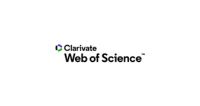DETERMINAÇÃO DO SEXO DE EMBRIÕES BOVINOS PRODUZIDOS IN VITRO: UMA REVISÃO DE MÉTODOS COM ÊNFASE PARA A PCR
DOI:
https://doi.org/10.5380/avs.v11i1.5630Palavras-chave:
bovino, fertilização in vitro, sexagem, cattle, in vitro fertilization, sexing, PCRResumo
O desenvolvimento de novas biotécnicas em reprodução animal tem proporcionado incrementos significativos no padrão genético de bovinos em todo o mundo. A produção in vitro (PIV) de embriões bovinos ocasionou um salto de qualidade na tecnologia da produção de embriões. Embora a PIV seja uma técnica consolidada, alguns estudos têm demonstrado uma desproporção no sexo de embriões nascidos, onde a porcentagem de embriões machos tem sido maior do que a teoricamente esperada de 50% para cada um dos sexos. Esse inconveniente abriu a perspectiva para o desenvolvimento de métodos para a determinação do sexo de embriões bovinos antes da transferência, uma vez que os produtos do sexo feminino são economicamente mais valorizados. A presente revisão abordará as vantagens e desvantagens dos principais métodos invasivos e não-invasivos, avaliados quanto ao seu potencial de determinação do sexo de embriões bovinos, com ênfase para a PCR que é a técnica que tem apresentado os melhores resultados.
Downloads
Como Citar
Edição
Seção
Licença
Autores que publicam nesta revista concordam com os seguintes termos:
- Autores mantém os direitos autorais e concedem à revista o direito de primeira publicação, com o trabalho simultaneamente licenciado sob a Creative Commons - Atribuição 4.0 Internacional que permite o compartilhamento do trabalho com reconhecimento da autoria e publicação inicial nesta revista.
- Autores têm autorização para assumir contratos adicionais separadamente, para distribuição não-exclusiva da versão do trabalho publicada nesta revista (ex.: publicar em repositório institucional ou como capítulo de livro), com reconhecimento de autoria e publicação inicial nesta revista.
- Autores têm permissão e são estimulados a publicar e distribuir seu trabalho online (ex.: em repositórios institucionais ou na sua página pessoal) a qualquer ponto antes ou durante o processo editorial, já que isso pode gerar alterações produtivas, bem como aumentar o impacto e a citação do trabalho publicado.













